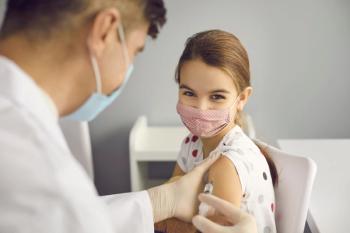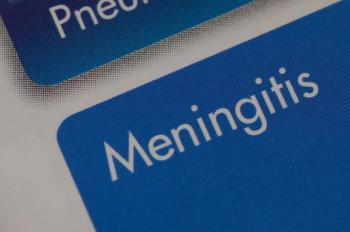
- Drug Topics May 2020
- Volume 164
- Issue 5
A Flurry of COVID-19 Studies Are Underway, but Scientists Warn a Vaccine Will Take Time
Never before have so many brilliant minds, machines, and groups come together so quickly in an attempt to develop a vaccine.
Never before have so many brilliant minds, machines, and groups come together so quickly in an attempt to develop a vaccine. The first human trial involving a vaccine product against severe acute respiratory syndrome coronavirus 2 (SARS-CoV-2), which causes the novel coronavirus disease 2019 (COVID-19), began in March in Seattle, Washington. However, some experts in the field say creating unrealistic expectations may be harmful and warn that maintaining standard protocols during the pandemic is essential.
The genetic sequence of SARS-CoV-2 became available online in February. Subsequently, investigators have been able to use this information to find the protein that is critical for the virus to be able to infect humans. The hope is to use a portion of that protein to create a vaccine that will generate an antibody response to prevent the virus from infecting human cells. Some investigators are working on DNA-based vaccines that contain genes that produce the virus’ protein, whereas others are looking at vaccines that include a portion of the actual protein.
“We have never known as much as we do today [about] how to make vaccines. So if there is any bright spot to the pandemic, it is that the scientific world has many tools at hand to make an effective vaccine,” said William A. Petri, MD, PhD, a professor of medicine and vice chair for research in the Department of Medicine at the University of Virginia School of Medicine in Charlottesville. “I hope that COVID-19 will transform medicine by strengthening public support of science, public health, and medicine, and by teaching us that regardless of race, color, ethnicity, or nationality, we are all in this together.”
Petri is working with colleagues at the Infectious Disease Research Institute in Seattle to make a spike glycoprotein vaccine using novel toll-like receptor (TLR) adjuvants. Essentially they are hoping to use COVID-19’s spiked shape against the disease. His group’s vaccine is one of approximately 50 vaccines currently in various stages of development. What will take significant time is that scientists may have to study a range of virus strains in a variety of animal models before any vaccine product could even make it to a phase 3 level of testing.
At The Johns Hopkins Hospital in Baltimore, Maryland, vaccines with different approaches are under development, and scientists have been testing several avenues of crippling COVID-19 in animal studies.1 “The speed of the testing has been incredible,” said Tzyy-Choou “TC” Wu, MD, PhD, MPH, director of the Gynecologic Pathology Division at Johns Hopkins Medicine. He studied the SARS virus in 2002 and 2003 and is drawing on that experience to come up with a safe and effective vaccine.
On March 16 in Seattle, Kaiser Permanente Washington Health Research Institute’s Vaccine and Treatment Evaluation Unit launched a trial of the
Related:
The vaccine involves a series of 4 injections, and the investigators are testing safety and antibody production. It is an mRNA vaccine encoding for a prefusion stabilized form of the S protein, which was selected by Moderna in collaboration with the National Institute of Allergy and Infectious Diseases.2 The S protein complex is necessary for membrane fusion and host cell infection and has been the target of vaccines against the coronaviruses responsible for Middle East respiratory syndrome (MERS) and SARS virus.
Coronaviruses are a family of viruses that include MERS and SARS. They are transmitted between animals and humans and can evolve into strains not previously identified. Wu and his colleagues have found that COVID-19 is continuing to evolve; consequently, it may be necessary to ensure that the portion of the protein and its genetic sequence will remain effective should the virus mutate or change.
“Several vaccines are advancing into clinical trials, [and] we are working to include our vaccine,” said Peter Jay Hotez, MD, PhD, dean for the National School of Tropical Medicine at Baylor College of Medicine in Houston, Texas. He said it is possible that a vaccine will become available and ultimately delivered in the pharmacy. “[As] this may be an adult vaccine, we think it’s likely that in time it could be administered by pharmacists,” Hotez told Drug Topics®.
On March 30, investigators at the University of Alabama at Birmingham announced the launch of their collaboration with Altimmune, Inc, for pre-clinical testing of a potential vaccine to prevent COVID-19 disease.3 The experimental product, named AdCOVID, would be a single-dose vaccine delivered by an intranasal spray. The investigators are examining immune responses to the vaccine in mice and are hoping to launch a phase 1 human safety and immunogenicity trial in patients in September.
What We Learned From the Past
Henry I. Miller, MD, a senior fellow at the Pacific Research Institute in San Francisco, California, was the FDA medical reviewer and head of the team that approved the first biopharmaceutical recombinant human insulin (Humulin) in 1982. He said that never before has there been such a worldwide effort to develop a safe and effective vaccine. “The good news is that the approaches are very different and varied, improving the chances that 1 or more will be successful,” Miller told Drug Topics® in an email.
However, he said the challenge is the nature of the vaccine products underway, all of which so far involve novel technologies. This will make regulators even more conservative in their evaluation and approval. “The facile prediction of 12 to 18 months is a pipe dream, off by at least a factor of 2, probably more,” said Miller. Getting to a phase 1 level is not a problem; however, he stated that the FDA had a significant role in a debacle surrounding a vaccine to prevent swine flu virus infections almost a half-century ago. “Of the 45 million people vaccinated against the swine flu in 1976, 450 developed a serious adverse reaction, the rare, paralytic Guillain-BarreÌ syndrome. What made the situation even more unfortunate for regulators is that the predicted epidemic never materialized, so the vaccine wasn’t needed,” said Miller.
It is for this reason that the FDA’s regulation of vaccines is especially conservative, he continued, and the bar has remained high for the approval of vaccines administered to millions of healthy people. According to Miller, the first rotavirus vaccine, RotaTeq, was tested in 72,000 healthy infants and the first human papillomavirus vaccine, Gardasil, was tested in more than 24,000 people.
Immunologist Adrian Liston, PhD, a senior group leader at the Babraham Institute and head of the VIB Translational Immunology Laboratory in Cambridge, England, disagrees with Miller. He said that how soon a vaccine becomes available will be dictated by how many thousands of deaths occur in the next 6 months. Liston told Drug Topics® that he expects a vaccine to be rolled out within the next 12 months and it may come with more risks than previous vaccines. He said a vaccine that is only 50% efficacious and causes minor adverse effects in up to 10% of people may be acceptable.
“It will skip a lot of the normal safety and efficacy steps, and it will likely be a much poorer vaccine than we are used to seeing, but it will likely have utility. Then, toward the end of 2021, I would expect to see the rollout of better vac- cines, with higher levels of efficacy and fewer adverse effects. At some point in the future, every child will likely be given a vaccine for COVID-19 as part of their routine vaccination schedule, but that is much more likely to be a third- or fourth-generation vaccine, with the optimal properties that we expect,”said Liston.
David J. Prelutsky, MD, medical director and founder of Southampton Healthcare and an associate professor of clinical medicine at Washington University School of Medicine in St Louis, Missouri, said there are many similarities between the spread of HIV and SARS-CoV-2. He highly suspects that a vaccine will be approved within the next 6 to 12 months. “I believe, [as] with HIV, therapeutic agents will be the answer and not a vaccine in the immediate future,” Prelutsky said. “There may be a vaccine, but that will take longer to develop.”
References:
1. Shapiro M. New coronavirus vaccine in development at Johns Hopkins. Johns Hopkins Medicine. March 21, 2020. Accessed April 7, 2020.
2. NIH clinical trial of investigational vaccine for COVID-19 begins. News release. National Institute of Allergy and Infectious Diseases; March 16, 2020. Accessed April 7, 2020.
3. Altimmune and The University Of Alabama at Birmingham to collaborate on development of single-dose, intranasal COVID-19 vaccine. News release. Altimmune; March 30, 2020. Accessed April 7, 2020.
Articles in this issue
over 5 years ago
Technology Innovations Transforming Pharmacy Practiceover 5 years ago
The Pharmacist's Role in Heart Healthover 5 years ago
Social Media and COVID-19over 5 years ago
Pharmacy Job Demand Could Grow Because of COVID-19over 5 years ago
Investigational Drugs in the Pipeline for COVID-19over 5 years ago
Arm Yourself With Information During the COVID-19 Pandemicover 5 years ago
The Carbon Footprint in the Room: ‘Going Green’ in the PharmacyNewsletter
Pharmacy practice is always changing. Stay ahead of the curve with the Drug Topics newsletter and get the latest drug information, industry trends, and patient care tips.






































































































































